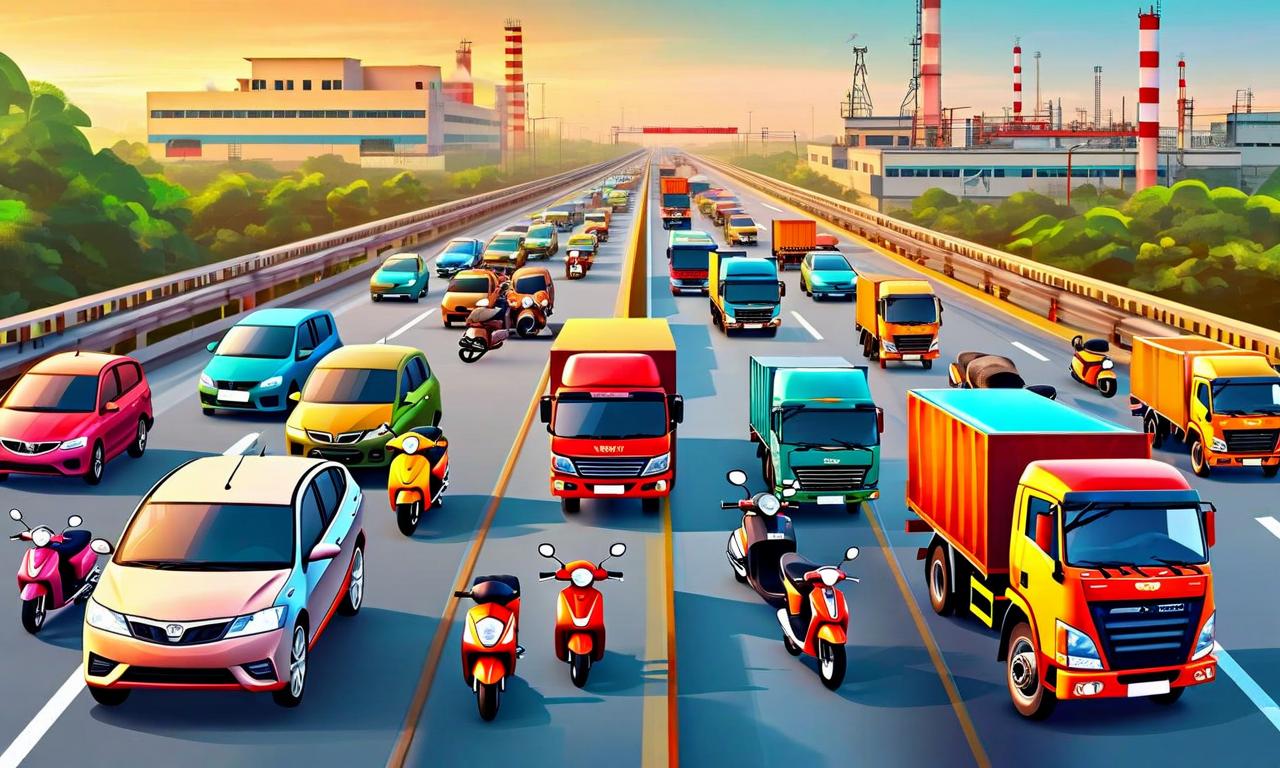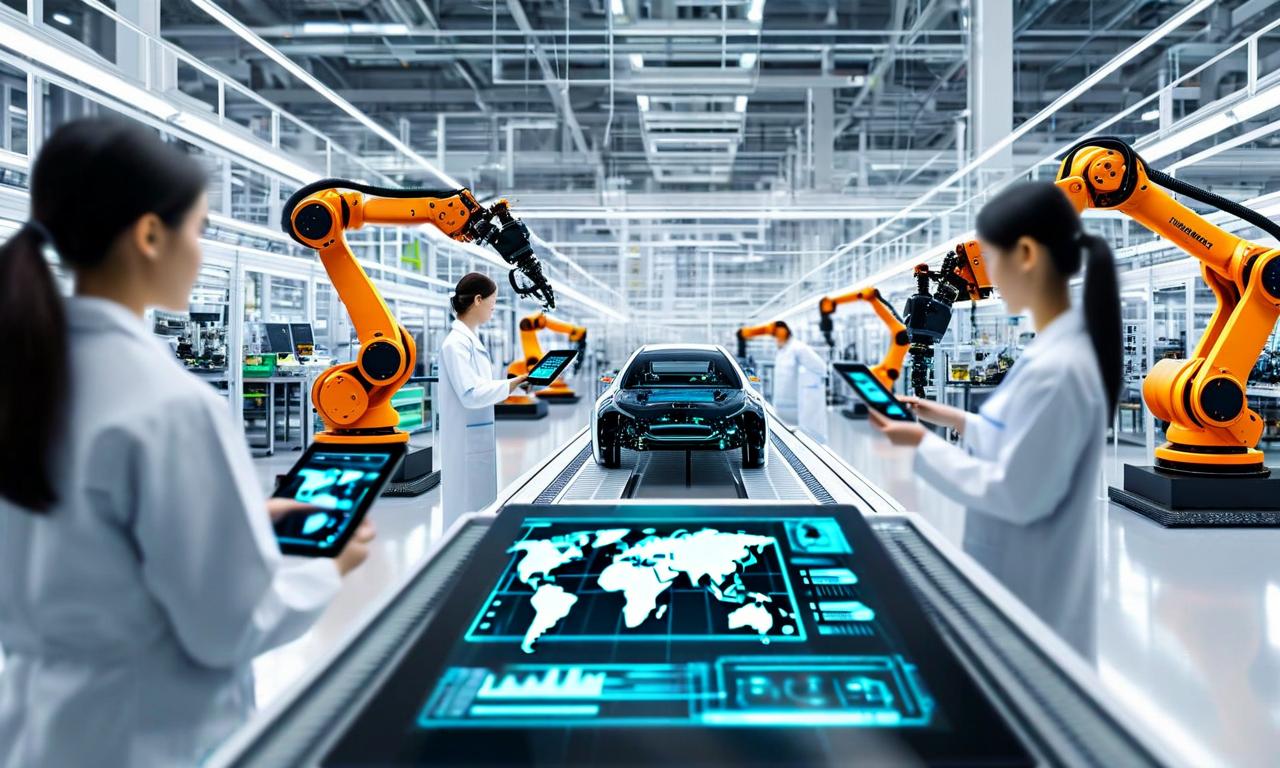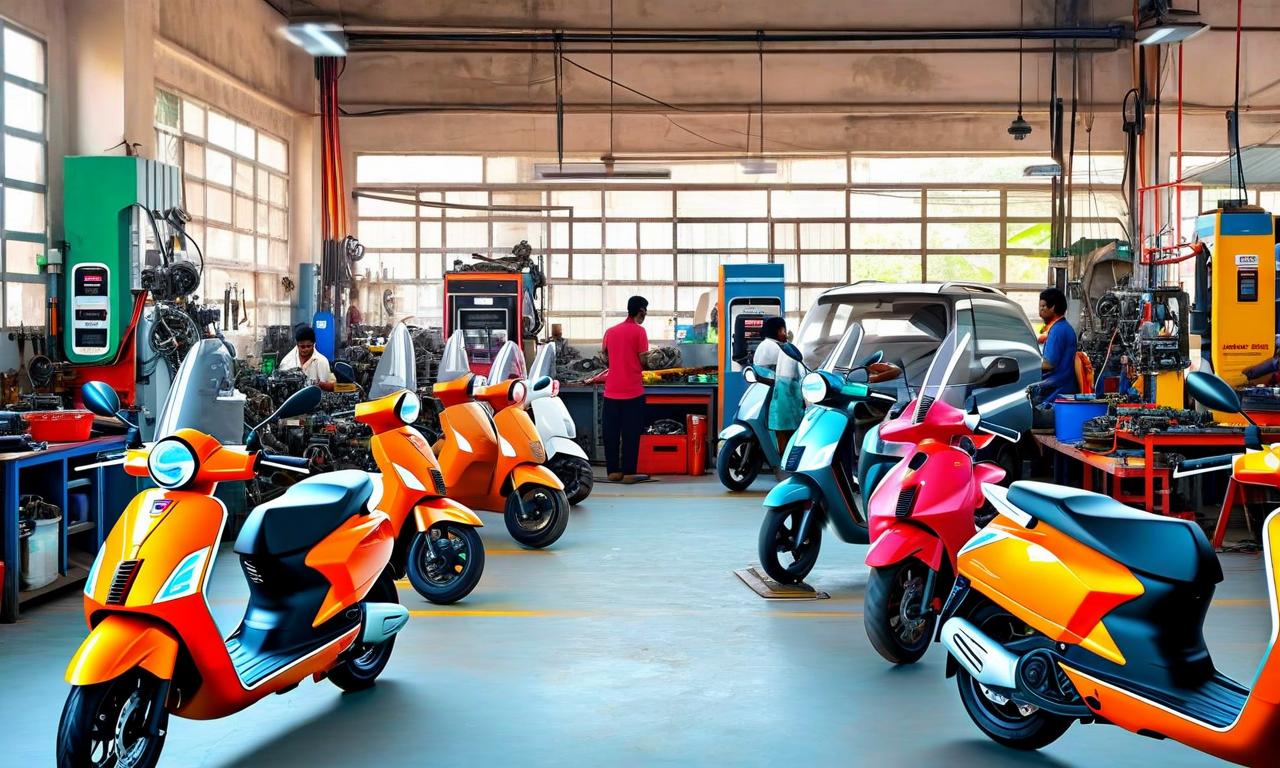Auto Industry Sees Strong Growth Across Segments
The Indian automobile sector has experienced strong growth across various segments. Commercial vehicles led with Tata Motors and Ashok Leyland reporting 10% and 16% year-on-year growth respectively. Passenger vehicles also performed well, with Maruti Suzuki, Mahindra & Mahindra, and Tata Motors showing significant increases. The two-wheeler market maintained steady growth, with Eicher Motors and TVS Motor outperforming industry averages. Electric two-wheelers showed mixed results, with Ola Electric experiencing a drop in year-on-year registrations while Ather Energy recorded impressive growth. Overall, Vahan registration data indicated 23% growth for passenger vehicles and 22% for two-wheelers since Navratri.

*this image is generated using AI for illustrative purposes only.
The Indian automobile sector has witnessed robust growth across various segments. Commercial vehicles led the charge, while passenger vehicles and two-wheelers also showed significant improvements. Let's dive into the details of this industry-wide upswing.
Commercial Vehicles: Leading the Pack
The commercial vehicle (CV) segment emerged as the frontrunner in sales figures:
- Tata Motors reported a 10.00% year-on-year growth in CV sales
- Ashok Leyland posted an impressive 16.00% increase, with its bus business surging by 34.00%
Passenger Vehicles: Strong Performance
The passenger vehicle segment also demonstrated robust growth:
- Maruti Suzuki: Total sales rose by 7.00%
- Mahindra & Mahindra: Recorded a substantial 31.00% growth in SUV sales
- Tata Motors: Witnessed a 27.00% increase in the passenger vehicle segment
Two-Wheeler Market: Steady Progress
While the two-wheeler segment maintained steady growth overall, some manufacturers outperformed industry averages:
- Eicher Motors and TVS Motor showed above-average performance
- Vahan registration data indicated a 22.00% growth for two-wheelers since Navratri
Electric Two-Wheelers: Mixed Results
The electric two-wheeler market presented a mixed picture:
- Ola Electric: Despite a 20.00% month-on-month growth, registrations dropped 62.00% year-on-year
- Ather Energy: Recorded impressive growth figures of 73.00% year-on-year and 54.00% month-on-month
Overall Market Performance
Vahan registration data provided a comprehensive view of the market's performance:
| Vehicle Segment | Growth Since Navratri |
|---|---|
| Passenger Vehicles | 23.00% |
| Two-Wheelers | 22.00% |
This broad-based recovery in the automobile sector can be attributed to various factors, including festive season demand and a reduction in GST rates. The growth across different segments indicates a positive sentiment in the market, with consumers showing increased interest in both commercial and personal vehicles.
As the industry continues to evolve, particularly in the electric vehicle space, it will be interesting to observe how different manufacturers adapt to changing consumer preferences and regulatory environments. The contrasting performances of Ola Electric and Ather Energy in the e-two-wheeler segment highlight the dynamic nature of this emerging market.
The overall positive trend in the automobile industry could potentially have wider implications for the Indian economy, given the sector's significant contribution to manufacturing output and employment.


































